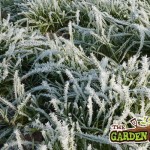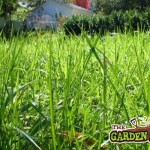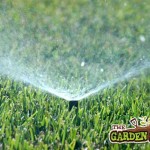This guide can help you to plan out your year in regards to Lawn Care & maintenance. Over the course of the year there are many tasks that can and should be undertaken you optimize grass growth and ensure a lush green lawn.
Whether you want to keep your lawn looking good or give it a serious make over we can offer you all the advise and help you need. To start, have a look at the year planner below and plan your lawn care of the nest 12 months;
- Winter Lawn
- Spring Lawn
- Summer Lawn
January
Keep Of Grass: Wet and frosty conditions mean that you should stay off your lawn. Walking or excess traffic in frost can damaged the grass blades, leaving them under stress and causing excessive water loss
In wet and soft ground conditions traffic on lawns can lead to compaction which will in turn lead to poor drainage and the build up of moss on your lawns.
February
Keep Of Grass: The start of February will be much like January, so keep off your lawn. As the month progresses and spring begins to emerge you may have a chance to do some lawn care & make your first cut of the year.
1st Cut: Only cut in dry conditions, avoid frost and soft ground. Ensure that you only ‘top’ the grass, only removing a small portion of the grass blade. There in nothing worst than starting the year with a heavy cut as this can really stress out the grass plants and again encourage moss growth.
Repair Work: By the end of February, with the ground drying out you could take on repair jobs around your lawn. But this is best done in March / April
Moss Control: Winter to early spring is the best time to apply Sulphate of Iron. This allows time for moss to die off fully prior to scarifying and re seeding
March
The middle of March is the beginning of the grass cutting season. Generally St Patricks week is when you will hear engines beginning fired up and the most distinctive smell of all – cut grass! Delightful!
As stated, be sure to only top the lawn in the first cut.
2nd Cut: You can lower the blades by one setting by the second cut. This is be cause the least amount of stress on the grass. Ideally, by March you should cut your grass every 10 tens
April
April is ‘The month’ when it comes to lawn care. The following tasks can be undertaken in April:
Prepare soil & sow new lawns
Repair work on existing lawns
Scarify mossy & old lawns
Aerate compacted & mossy lawns
Topdress Lawns
Re-seed lawns
Roll our lawn – in damp (not wet) conditions
And of course, continue to cut lawns
Feeding established lawns
April is a best month to work on lawns because this is the month when the ground is dry, yet conditions are not excessively warm. So the soil can be worked and the grass is not overly stressed. Growing rates won’t yet peaked yet and by feeding now the lawns will respond well and quickly recover over the summer months
May
Grass growth can peak in May, so regular grass cutting is required and lawn care work is reduced
Any maintain work not carried out in April can be done in May.
Continue grass cutting, mulch cuttings in every second cut to return nutrients to the lawn
If you have chosen to feed your lawns, continue applying in May. With one application every two weeks
Weed Killer: Dicophar will control weeds on lawn, apply in dry conditions
June & July
Mid summer can see a reduction in growth rates due to the lack of water and higher temperatures
Drought conditions: It is best to keep off the lawn and suspend cutting
Irrigation: water lawns in the early morning or evening, be sure the water the edges & borders as these are dry out first
Weed Killer: Dicophar works best when applied twice in the one season
August
Growth rates increase again in August due to the warm soil conditions, but increased rain and shade.
August is the next best month after April to do lawn care work on your lawns
Work that is often done in August include:
Repair work on existing lawns
Scarify mossy & old lawns
Aerate compacted & mossy lawns
Topdress Lawns
Re-seed lawns
It is important not to feed your lawns after the month of July.
September
You still have time to sow grass seed and repair lawns
By the end of September grass cutting would normally cease but it can continue into October
October
Frosty conditons will return in October and grass growth will end
Clear leaves: The work however does not end; as leaves fall from trees they should be raked up and removed
November & December
Continue to rake up fallen leaves
Moss Control: In mild conditions you can apply Sulphate of Iron
A light cut mid winter can also neaten up your lawn, but only in dry, frost free conditions


